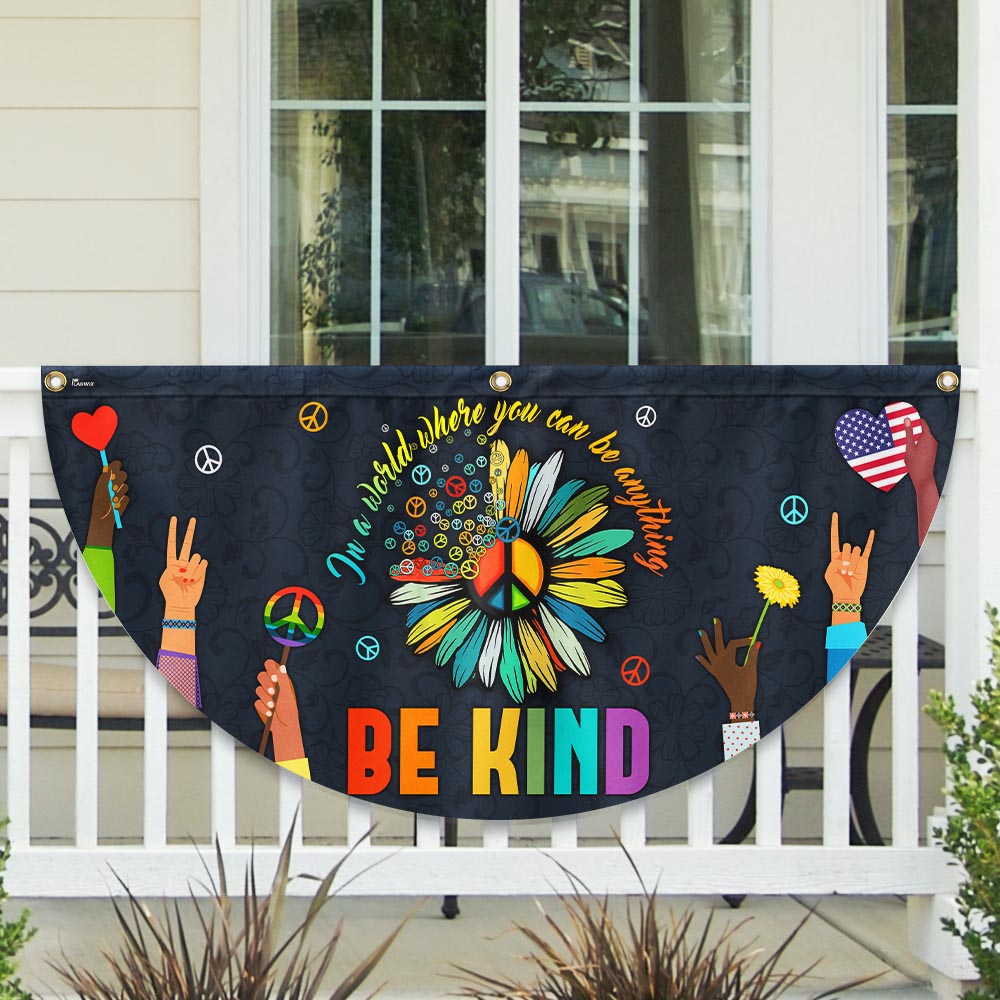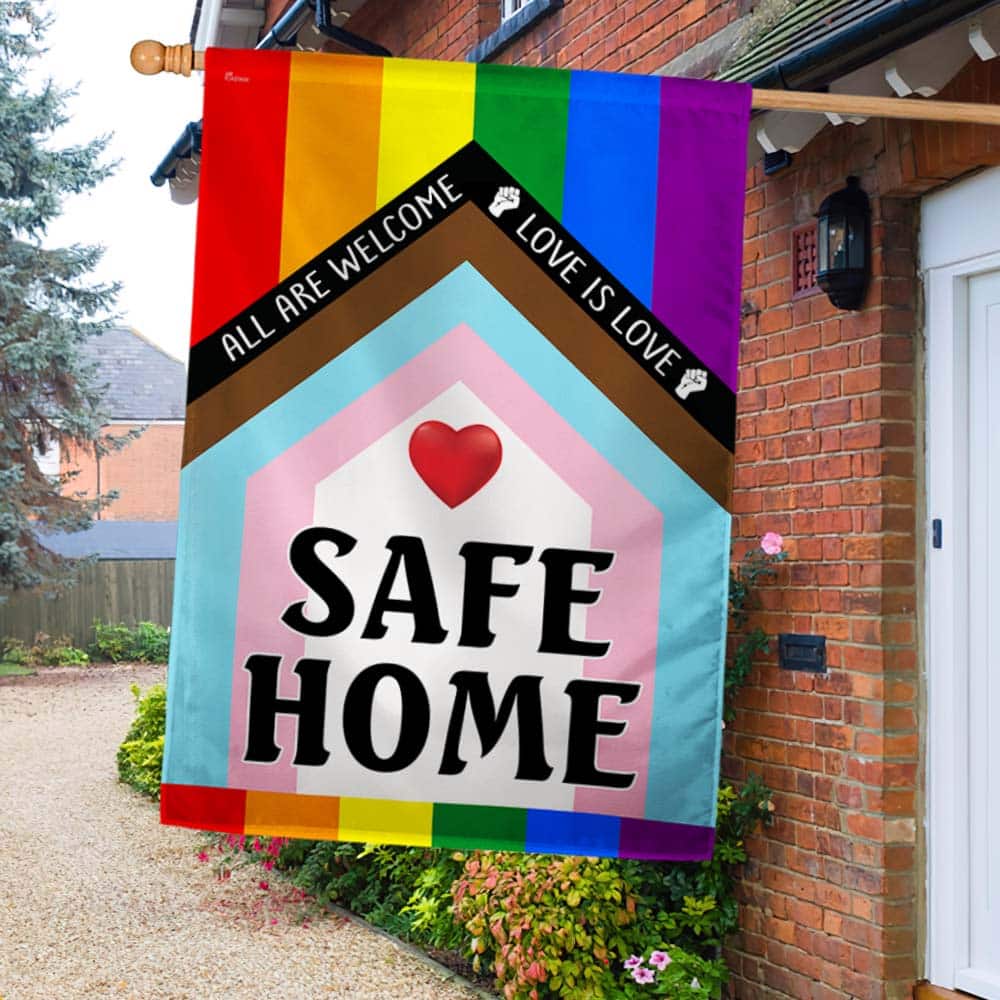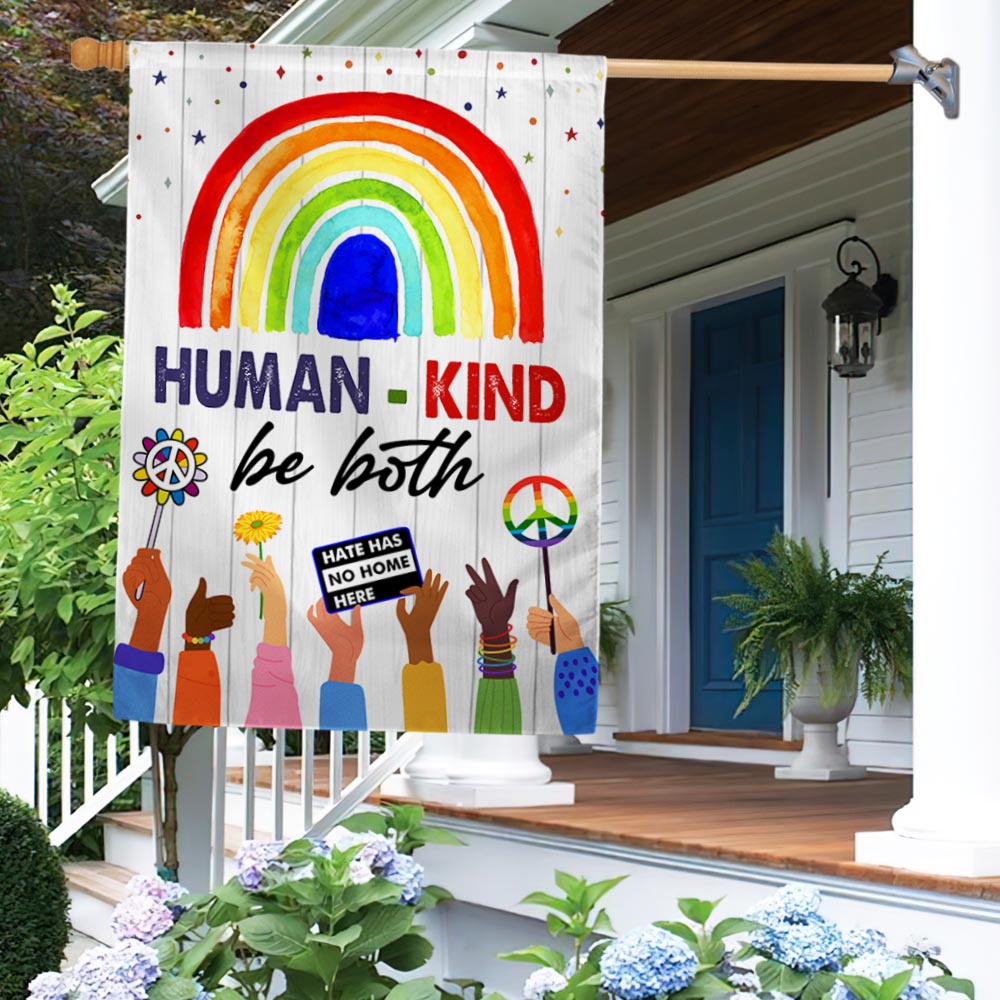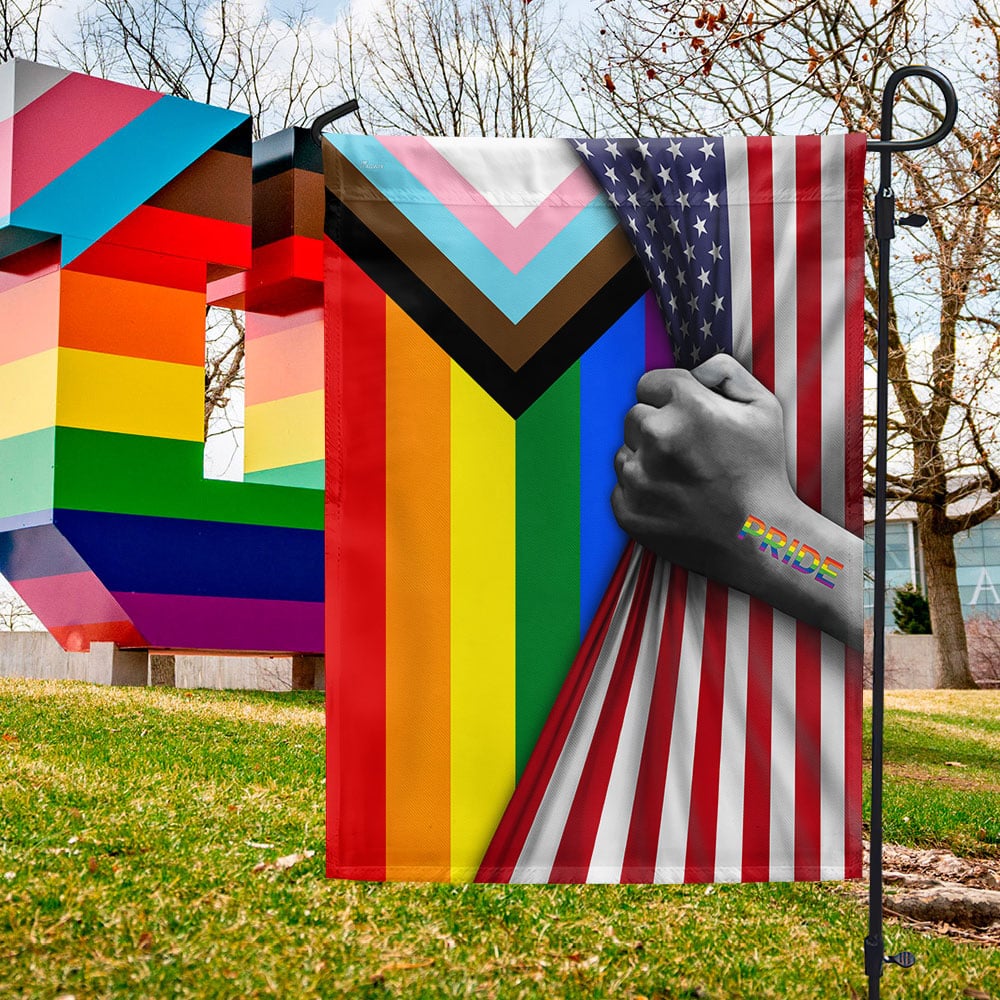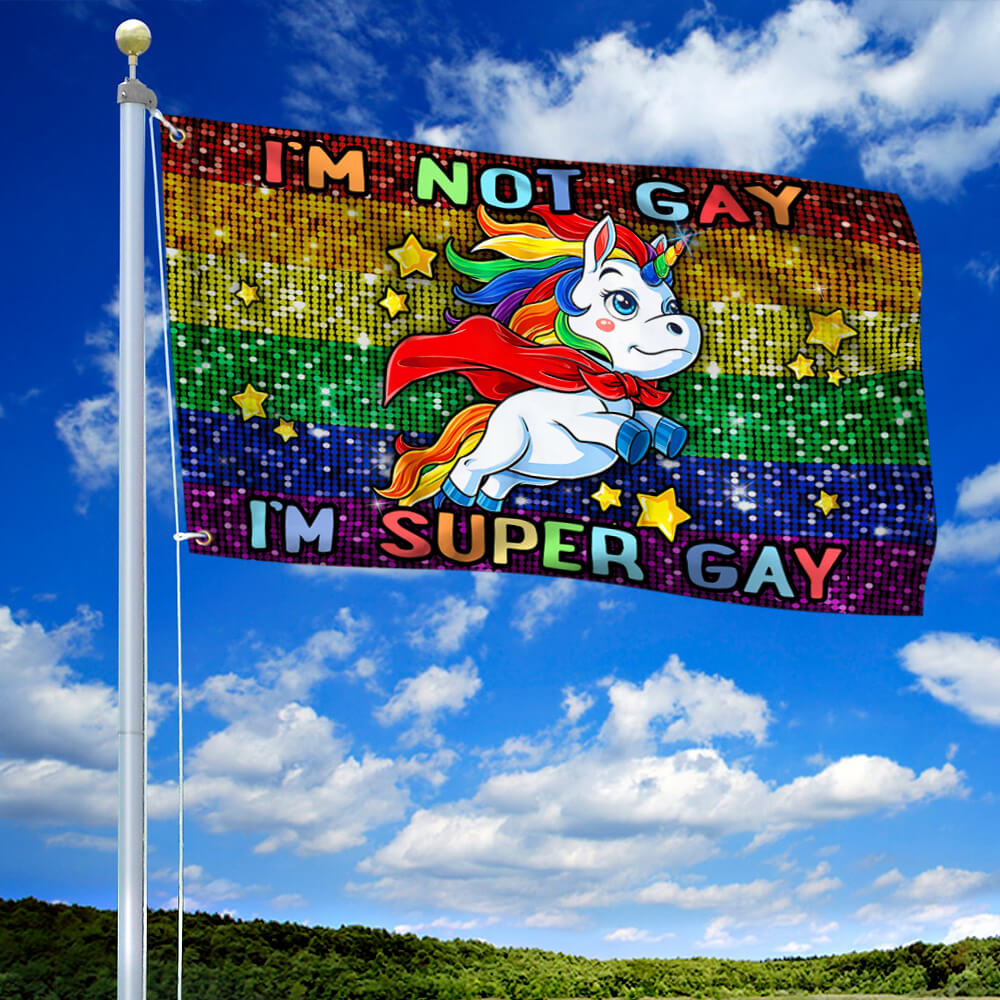Among various LGBTQ+ pride flags, the aromantic flag represents those having no romantic attraction towards others.
Like the lesbian flag and Pansexual flag, the aromantic flag (or aro flag – for short) has multiple designs.
Behind each design are a different visual art and a different creator. However, it bears not much difference in terms of the aromantic pride flag meaning and some portions of the look.
Scroll down to learn more!
Contents
- 1 What’s Being Aromantic?
- 2 The Aromantic Flag Meaning
- 3 Myths about Aromanticism
- 4 Myth #4 – Everyone is either completely romantic or vice versa; there’s no in-between
- 5 Myth #5 – Aromantic people can’t have a meaningful life because romantic relationships are the most important
- 6 Respecting Aromantic and Asexual Orientations
- 7 Bottom Line
What’s Being Aromantic?
Being aromantic is generally explained as experiencing little to no desire for romantic relationships.
The aro status can fall on any level of the “aro spectrum.” One might feel like they can attach themselves to romantic relationships to some extent, while others could never do it.
Like many other identities, aromantics have been misunderstood sometimes. In the bottom section, we’re explaining the five myths around aromanticism.
Now first, let’s dive into the aromantic meaning.
Here are some reflections on aromanticism:
- Aromantic individuals are not unfeeling or indifferent; they simply do not experience romantic attraction.
- Although they do not feel romantic love, aromantics can have profound affection for their friends, family, children, and pets
Understanding Aromantic Individuals
Aromantic Definition Update
In 2022, the Oxford English Dictionary expanded to include over 2,050 new entries, with 18 of those specifically addressing aspects of gender identity within the LGBTQIA+ community. “Aromantic,” often abbreviated as “aro,” is one of these new entries. Aromantic individuals typically experience little to no romantic attraction towards others.
About Aromantic Relationships
While aromantic people may not experience romantic feelings, they can still engage in sexual relationships and form deep, long-lasting partnerships. The absence of romantic attraction does not preclude the presence of other forms of attraction and affection.
Understanding Asexual Individuals
Asexual Definition
An asexual person often feels emotional and romantic attraction but exhibits minimal or no sexual desire. Despite their lack of interest in sexual activities, asexual individuals are not relegated to solitude; they can fall in love, marry, and have families.
Asexual Statistics
Reliable data on the prevalence of asexuality is limited. However, one study estimates that approximately 1% of the population identifies as asexual. Within this group, about 25% also identify as aromantic, indicating a lack of both sexual and emotional attraction.
The Aromantic Flag Meaning
Aromantic flags represent those having little interest or no desire for romantic relationships.
There are three versions of the aro pride flag. We’re looking at each of them and breaking down the meaning by colors.
Related Posts: Lesbian Flag and Its Variations Throughout History
The oldest aro flag
The oldest aro flag was released to the public by National Coalition for Aromantic Visibility in the early 2010s. However, who invented it remains unknown today.

The flag features three horizontal stripes, from top to bottom, as follows: green, yellow, orange, and black.
- Green for aromanticism
- Yellow for friendship
- Orange for those falling into the gray gap of the aro spectrum
- Black for romantic individuals who go against the traditional culture of romance
Cameron’s version

This version was created by Cameron Whimsy, retaining the aromantic flag colors like green and yellow. However, another stripe of lighter green below the top green, making it a five-striped flag. The two bottom stripes indicate the colors gray and black.
- Green for the aromantic spectrum
- Yellow for platonic love
- Gray & Black for all aromantics regardless of sexual orientation
The official aromantic flag
The current Aromantic flag has been the most used version so far.
In 2014, Cameron created it based on just a color change in the middle stripe. The creator replaced yellow with white, which makes the overall shade of the flag more gentle with largely the same meaning.

According to Cameron, this version aims for the aromantic umbrella as a whole.
- Green represents aromanticism as always (green is opposite to red, the color of romance)
- Lighter green represents the aro spectrum
- White symbolizes aesthetic attraction and non-sexual close friendships
- Gray represents specifically those in the “gray area” under the aro spectrum, meaning they’re not entirely aromantic
- Black for all sexual orientations, separate from being aromantic but can happen in every individual within this community.
People also search
💥 NEW RELEASE!
💥 NEW RELEASE!
💥 NEW RELEASE!
💥 NEW RELEASE!
💥 NEW RELEASE!
💥 NEW RELEASE!
Myths about Aromanticism
Try to find more? Here are our suggestions
- A Brief History of Asexual Flag And How It Was Chosen
- Trans Flag and Why It’s Pink, White, Blue
- History Of The Bi Flag and The Bi-Curious Flag You Didn’t Know Existed
- Lesbian Flag and Its Variations throughout History [Info & Images]
Myth #1 – Aromantics are emotionless to others
Oftentimes, they’ve been considered to be heartless. That is wrong because they are humans with emotional capabilities. It’s just that romance doesn’t work for them in their relationships.
Also, it doesn’t even mean that they can’t build loving relationships. They can form any relationship with their platonic partners without a romantic or sexual attachment.
Myth #2 – Asexuality and Aromanticism are the same things
Although some asexuals might feel their sexuality is linked to their aromanticism, those are two different terms. Being aro is all about romantic orientation, while asexuality is a sexual orientation.
So, you could be both or neither. Or you could be one or another. Just don’t bundle everything together!
| More: A Brief History of Asexual Flag
Myth #3 – Being aromantic is just a phase
“You’ll soon grow out of it” – heard familiar to you as an aromantic?
While it is true that some people can shift from one identity to another, it is uncommon. Furthermore, they are nearly impossible to reverse completely.
Sexual orientation is an emotional state that has developed in your soul rather than your brain. Most importantly, it is born and develops naturally within each individual.
Myth #4 – Everyone is either completely romantic or vice versa; there’s no in-between
Relativism manifests itself across all gender identities and sexual orientations.
Many people are unaware of this because they are misled by how labels work. Almost every label has a specific meaning. And this causes many beliefs that what it represents has no variations.
Myth #5 – Aromantic people can’t have a meaningful life because romantic relationships are the most important
First, the point of view in this myth is too subjective. The way you feel about your life and perceive its meaning shouldn’t depend on others’ opinions.
So, if you’re aromantic, you don’t need romance to fulfill your life.
Besides, platonic bonds are just as important as any kind of positive relationship. It ultimately depends on what you want to do with your personal life!
Last but not least, you need to know that you can always be enough on your own!
Respecting Aromantic and Asexual Orientations
Importance of Respect It’s crucial to respect the romantic and sexual preferences of aromantic and asexual individuals. Understanding and acceptance play significant roles in supporting their well-being and recognizing their valid experiences within the spectrum of human sexuality.
Avoiding Misunderstandings One should not dismiss the feelings and thoughts of aromantic and asexual individuals regarding relationships. Avoid pushing them into romantic or sexual situations that they find uncomfortable or unappealing.
Bottom Line
Pride Month is coming because it’s nearly the end of May. Should you find a need to wave the aromantic flag that represents who you are, just do it!
Whether you’re at a parade, an LGBTQ+ club, or at home, it’s beautiful that you celebrate it.
Thanks for reading!
🔥 Shop the Trends at Flagwix – Stay Ahead of the Trendy Decorative Flags!
🌱 Learn & Grow – Explore Tips and Insights on Our Flagwix Blog!
✨ Join the Conversation at FLAGWIX VIP GROUP – Engage with Our Latest Posts with Flagwix VIP Fan!

I have dedicated my career to unraveling the captivating stories behind these symbolic emblems. With a deep fascination for history, culture, and symbolism, I explore the stories behind each flag, weaving together narratives that celebrate their uniqueness and global significance. Join me on this enthralling journey to uncover the mysteries and intricacies of flags from around the world.
